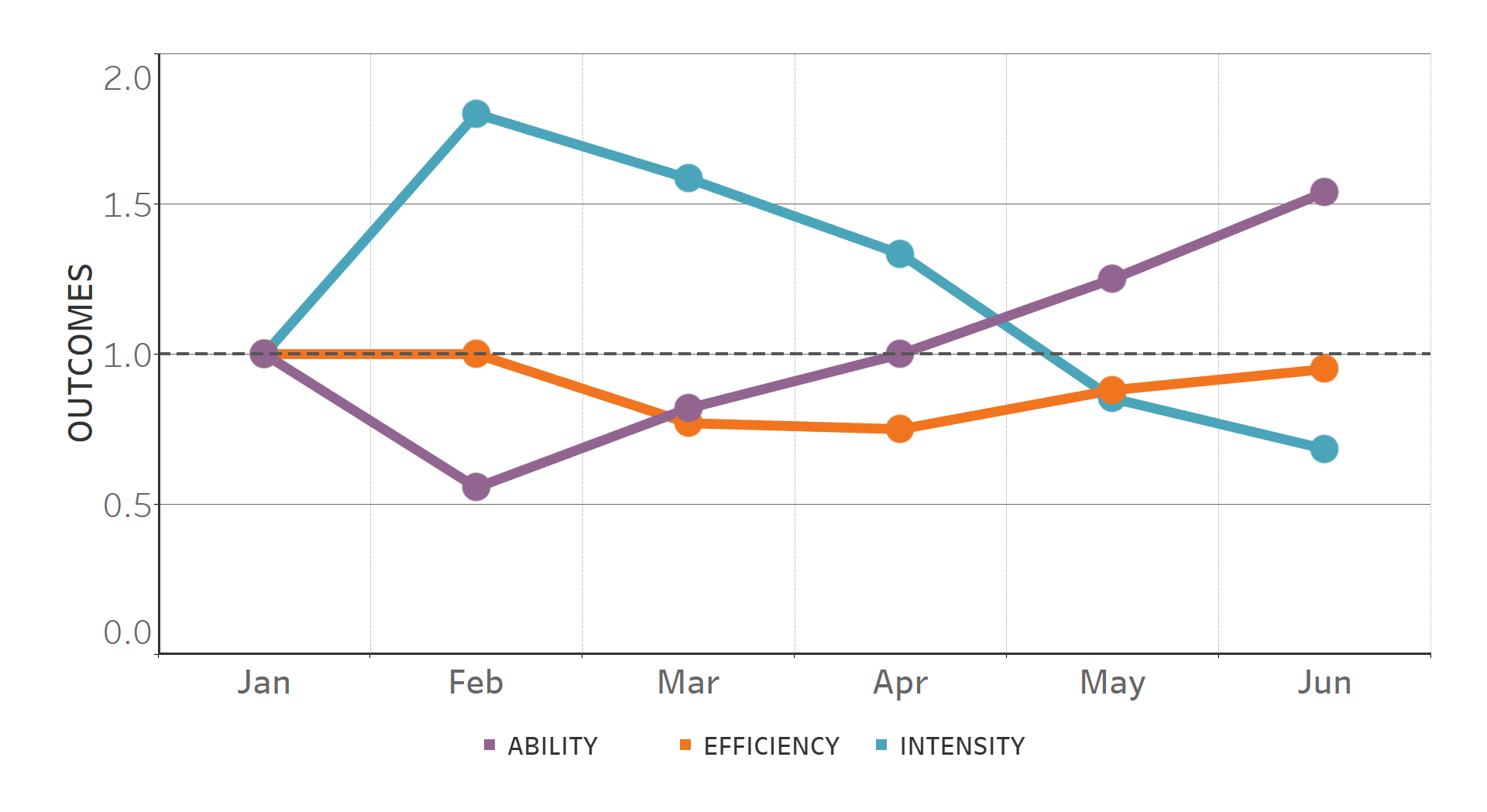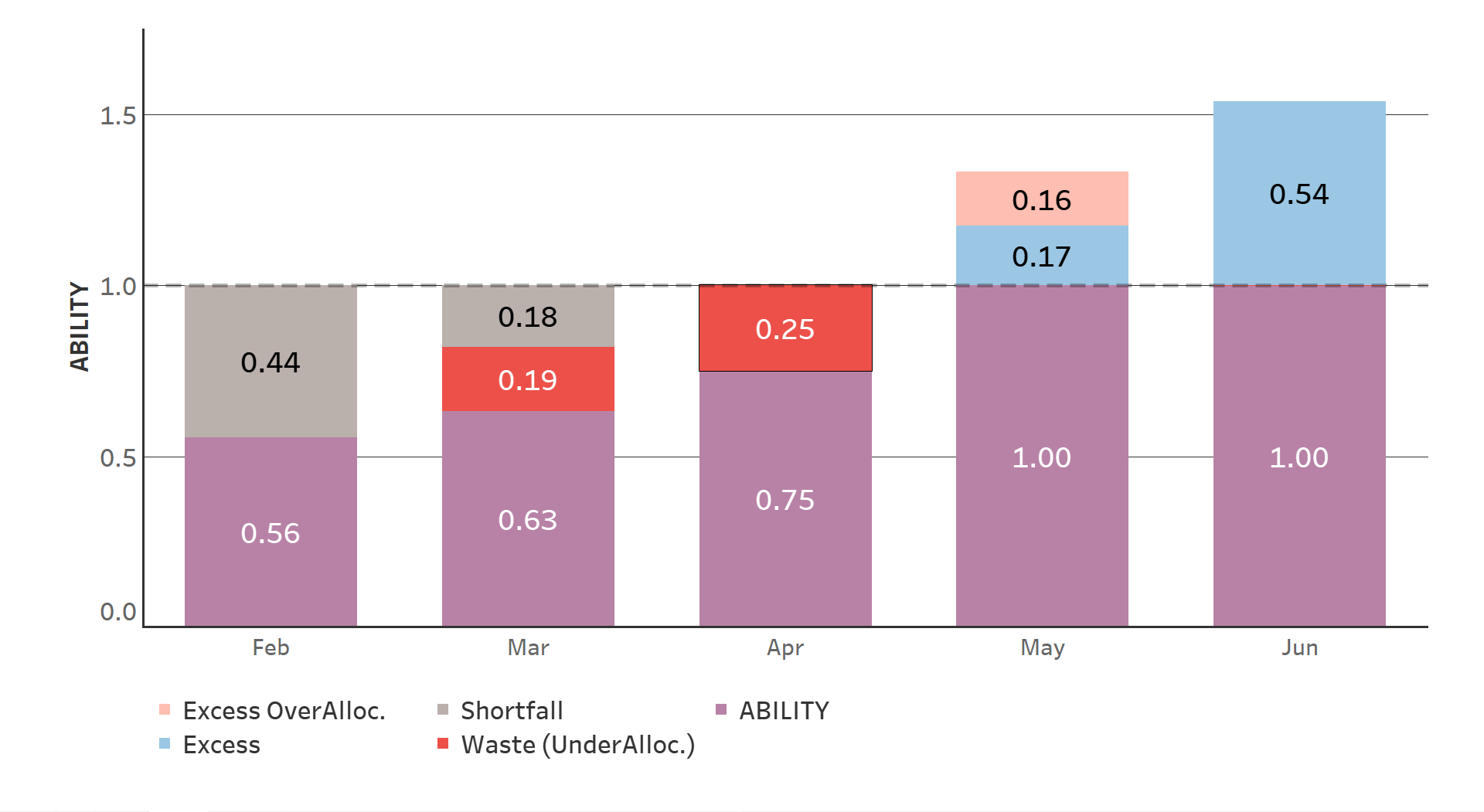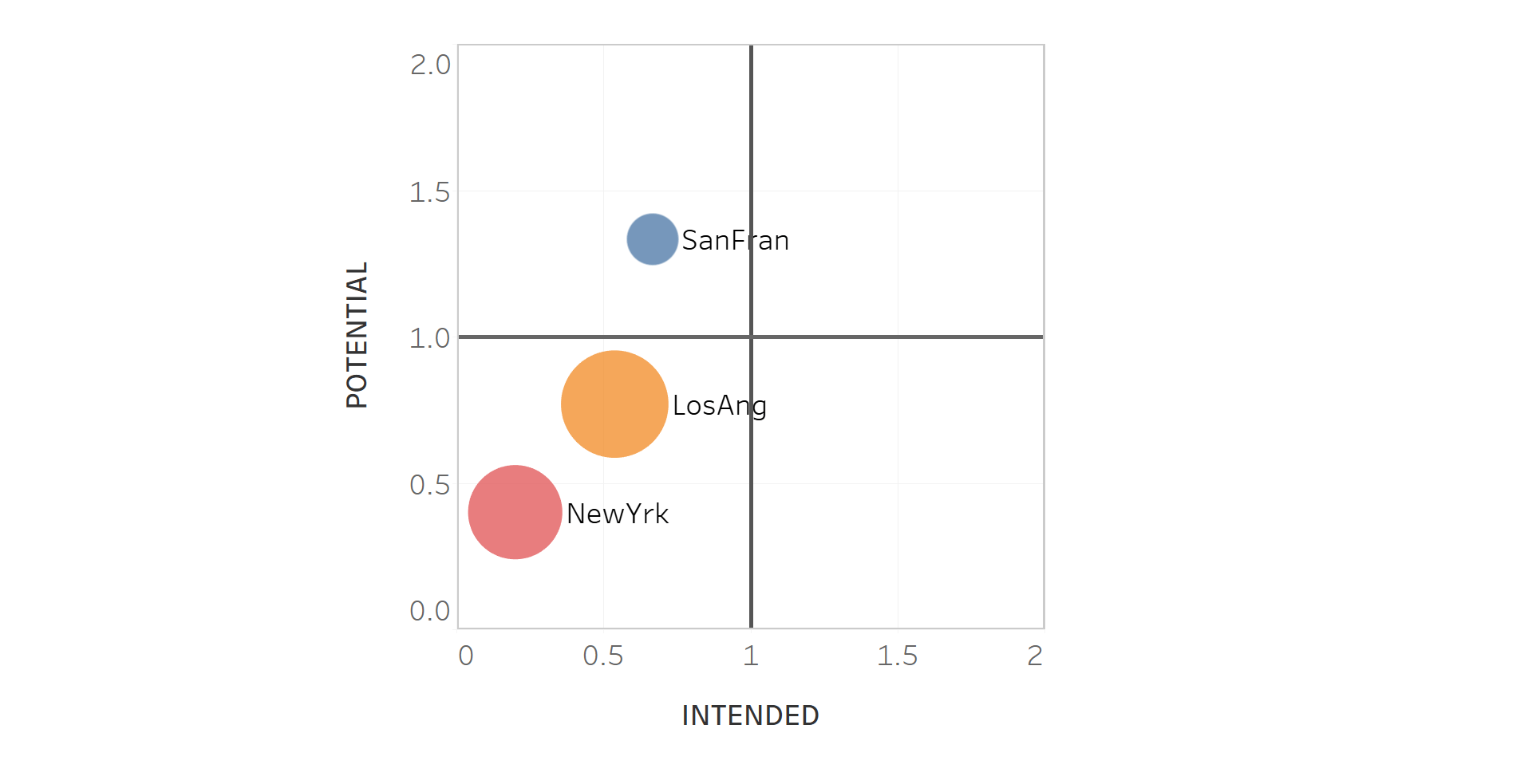WHY EFFORT MANAGEMENT
Organisations need, have and use effort. Though related, they are not the same. A manager’s core responsibility is to predict and align these. Managers are successful when they deliver their commitments and use their resources efficiently. They fail when their people are over-worked.
A manager’s fundamental mission is to balance delivery, financial and people results. Ability, Efficiency and Intensity forecast these outcomes. Forecast outcomes are differentiated by their Potential and Intent, because what could be achieved is not always what is planned.

Only 7% of managers believe their workforces are optimised. 1 in 4 workers feel burnout most of the time. More than 1 in 4 reasons projects fail is from poor effort management. Many consultancies accept 70% utilisation. 10-15% of the world’s GDP is lost due poor workplace wellbeing and health.
Human effort is our most precious resource. Not just because it is at the heart of all productivity. Organisations must value human effort. Not just to deliver products and services, and profits. Work should be rewarding and continuous.
Too often, work is long hours of harmful pressure. We now expect that the same person who goes to work, must come home from work.
Workforces have inefficiencies. They fall short of, or exceed, their potential outcomes. They waste effort with under, or over, allocation. The Stretch of overtime reduces productivity as much as it increases delivery. Most inefficiencies are untapped Opportunities. Realised Opportunities will reduce the Cost Impact of inefficiencies.
All levels of management are accountable for their workforces’ outcomes. The higher the decision level, the greater the workforce impact. Silo’s and hierarchies hinder the best decisions. Outcomes and Opportunities can be rolled up through an organisation.
Knowing what will happen is not enough, because there are many possible decisions. To make decisions that optimise, the type and size of interventions need to be just right. Effort Management provides recommendations that will optimise a workforce.
Systems for managing financial and material resources are well established. Systems for managing human effort are not. Some industries, like call centres and manufacturing, have the best practices. Others have none.
Many workforce practices inform strategic and daily workforce decisions. Commonly, they use the gap between Supply and Demand. Rarely, are the fundamental questions answered. How much will we deliver? How efficiently will we use our people? How hard will our people have to work? How do we optimise?
Existing ways to manage
workforce effort
Workforce planning – Resource and Workforce management – Capacity planning – Scheduling / rostering – Allocation – Material resource planning – Time keeping – Absence Management.
Effort Management enables organisations to:
1. Forecast performance, by predicting Outcomes, Opportunities + Cost Impact
2. Report + analyse at all levels, by comparing, aggregating + drilling down
3. Recommend interventions, in 9 ways that will optimise your workforces
Read more about Effort Management…
How To Harness Effort Management
RESRODEL is the ‘resource role model’ that leverages the power
of the Effort Management Theorem (EMT) + Advanced Effort Management (AEM) analysis
Resro.OPT analysis uses AEM
for optimising
all your workforces
Learn more about Resro.OPT
Resro.ACT software uses EMT
for balancing people + work
in activity based enterprises
Learn more about Resro.ACT



